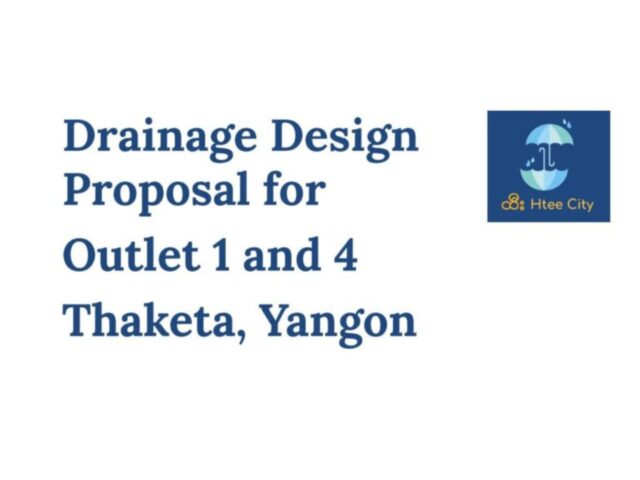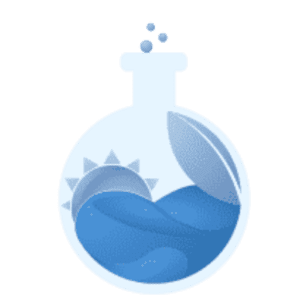Community asset Mapping via Mid-point Survey & Series of Workshops
Main Objective: Finding the interest in individual rainwater harvesting system and raising awareness
Result outcomes: Among the total respondents 121, 27 are from the Direct group, 26 are from the General group and 66 are from the Exposed group.
- Direct – People who have had frequent contact with the project team including workshops, implementation support, committee members etc.
- General – People who were involved in our Household and Business Survey at the beginning of the project and IDoNation donation survey/program
- Exposed – All other residents of Ward 5
- What do you use rainwater for (if you use it)?
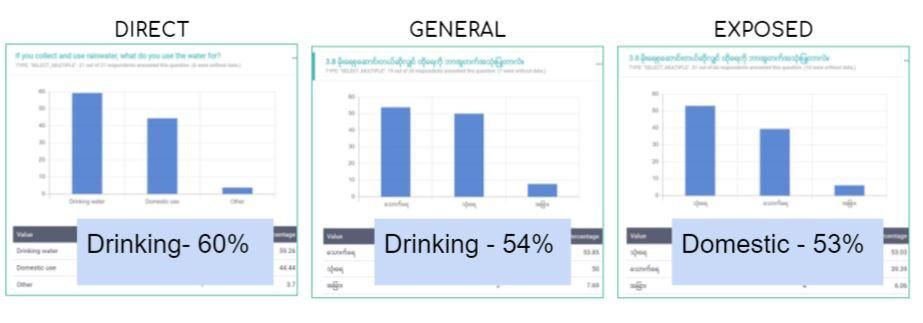
- Would you like to have a RWH system? Why and Why not?

What most of the respondents mentioned are;
- Preferred lowest price range of less than 300 000, but most weren’t sure of how much one costs normally
- Financial difficulty
- Not a big concern
- Don’t know how
- Not enough space
- Concerning not sufficient for whole year
- Would you prefer to pay in installments or as a one-time payment?
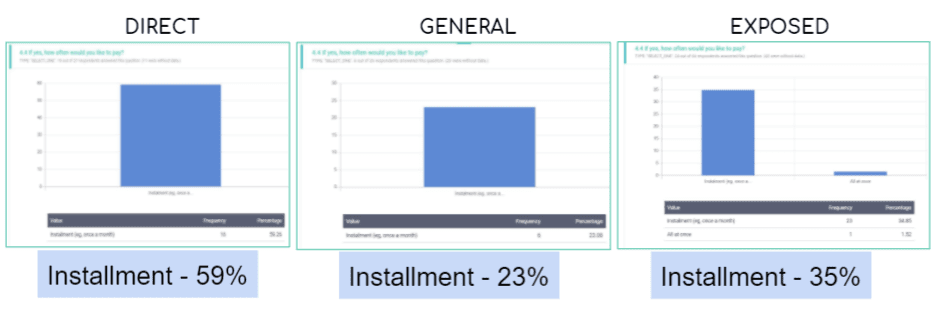
- Would you prefer a communal or individual RWH system?
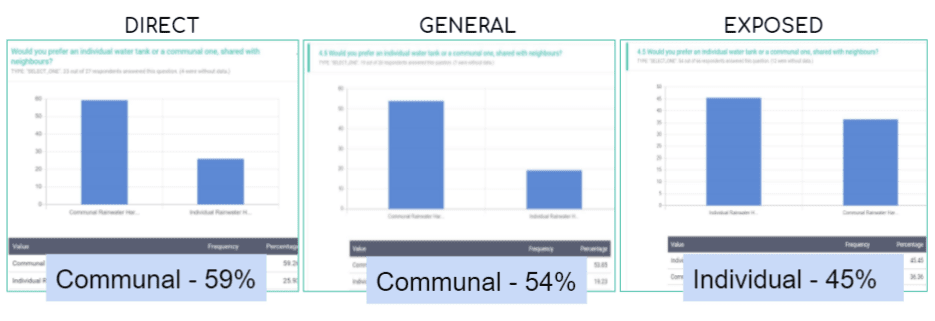
Network Development Planning
In this case, after analysing some impact assessment, the project team made out the list of potential activities on how to develop the intervention of expanding the RWH system rather than the pilot households through the network development including:
- Collecting contacts and creating linkage with possibilities.
- Finding Contractors
- Finding Financing (donor)
- Financing for consumers (eg, Microfinance Institutions)
- Raising awareness about RWH (finding partners, separate social media page or newsletter about RWH ~ printing, marketing, information board, communication & education awareness tool)
- Organizing education & information sessions (depending on the situation)
- Finding Materials & Equipment partners/ suppliers
- Organize a Water filter demo session
- Channels where households can express interest in RWH (Signup list)
- Talk to YCDC to establish a joint position on RWH
- Make slide deck
- Continue monitoring
- Nazava Filter certification process


